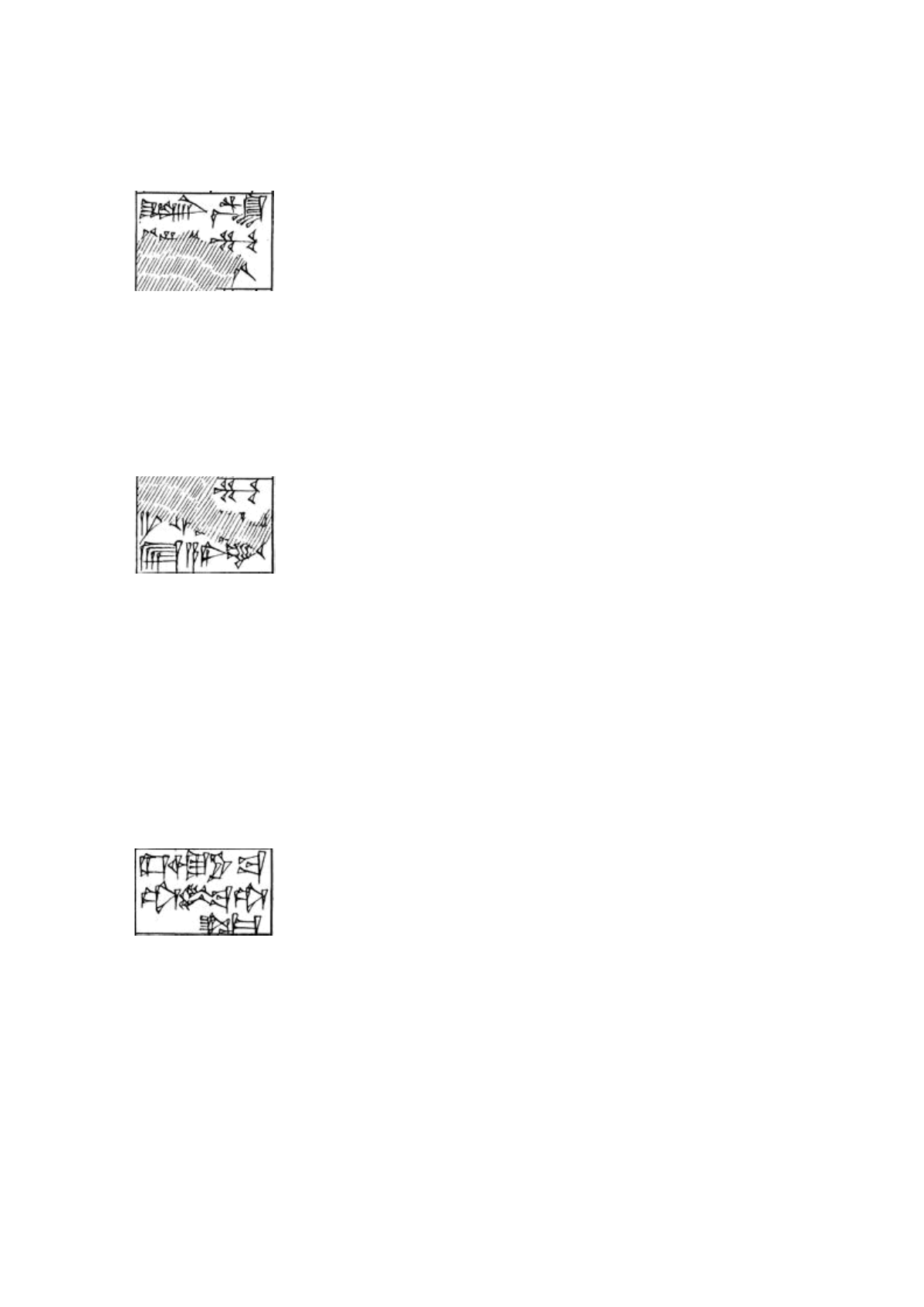

221
Gudea di Lagash – La costruzione del tempio di Ninjirsu - Cilindro A
A XIX.11 - 521
lugal
d.en.
[
ki nam
]
mu.[ni].
[
tar
]
[lugal
d
Enki].e nam mu.ni.n.tar
il signore Enki il destino stabilì.
[lugal
d
Enki].e : col marker dell’ergativo
nam mu.ni.n.tar : .ni è il DP del locativo-terminativo (GSG1.186; per un
dativo.na: cfr. GSG1.185; A
XXIV.2); per nam…tar : “to decree the fate (most often with -ni-, or -ri-)”, vedi A I.1. Normalmente
mu.niè scritto
mi.ni(GSG1.184-185; cfr. A I.2)
A XIX.12 - 522
[sig
4
] mu.
[
jar u
3
.šub.ba?]
e
2
.a i
3
.[kur
9
]
sig
4
mu.n.jar u
3
.šub.a e
2
.a i
3
.kur
9
(Gudea) il mattone depose nello stampo e entrò nel tempio.
sig
4
mu.jar : cfr. A XIX.19; Falkenstein traduce in questo caso “er machte Ziegel” (GSG1.80): potrebbe
quindi tradursi: “
egli fece mattoni con lo stampo
”
u
3
.šub.a : con marker del locativo; strana la sua posizione dopo il verbo.
e
2
.a : con marker del locativo “im (ins) Haus” (GSG1.107); non cross.-ref. dal DP .ni nella catena verbale
(GSG2.117)
kur
9
(ku
4
, tu) : “to enter; to bring; to deliver (-ni- specifies delivery location); to enter before someone (with
dative prefix); to let enter (with -ni-); enter into the presence of (with -ši-); to turn round, turn into,
transform (with -da-) (singular [?] reduplication class stem)” (SL); cfr. A VI.11, VII.2. Falkenstein
intende diversamente : “er brachte sie ein” (GSG1.169), “er brachte ins Haus ein” (GSG2.111)
A XIX.13 - 523
pisan u
3
.
šub.ba.tasig
4
ba.ta.il 2[pisan u
3
.šub]
.ak.tasig
4
ba.ta.il 2Dal telaio dello stampo il mattone fu tolto,
pisan : cfr. A XIII.16
[pisan u
3
.šub].
ak.ta: “aus dem Rahmen der Ziegelform”, con marker del genitivo (GSG1.94) e dell’ablativo
sig
4
ba.ta.il2
: “er nahm daraus den Ziegel hoch” (GSG1.80; cfr. GSG1.167, GSG2.148); per la presenza del
CP ba (GSG2.191), preferisco la traduzione al passivo (cfr. A II.20): .ta è il DP dell’ablativo (GSG1.217;
GSG2.148); il
2
(ila
2
): “to lift, carry; to deliver; to bring; to endure; to support; to carry forward (in
accounting); to be high; to shine” (SL)
















